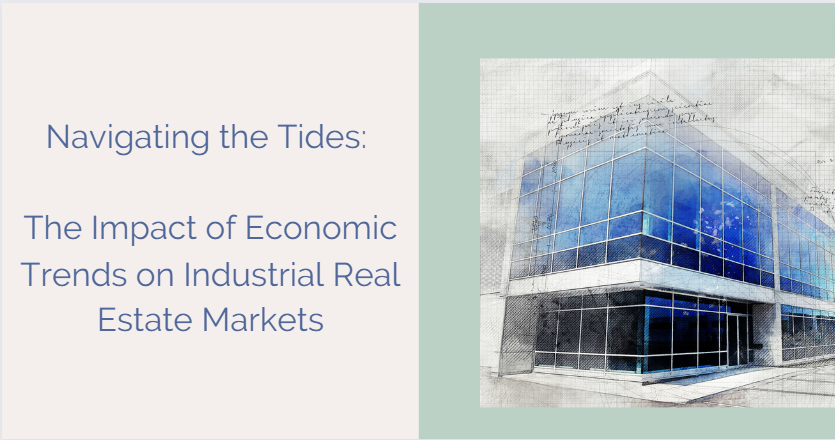Commercial real estate is inextricably linked with the broader economy, reflecting the ebb and flow of macroeconomic trends. Today, we delve deep into how economic factors influence one particular CRE property type - the industrial real estate market.
The industrial real estate market encompasses properties designed for manufacturing, production, storage, and distribution - think warehouses, distribution centers, and factories. Its close ties with the economy, specifically sectors such as manufacturing, retail, and trade, make it susceptible to variations in economic indicators.
Let's start with GDP growth. As the primary barometer of economic health, GDP trends can be mirrored in the industrial real estate market. Robust GDP growth often indicates increased manufacturing and consumption, directly spurring demand for industrial spaces such as warehouses and distribution centers. Conversely, a downturn in GDP can lead to reduced demand, affecting occupancy rates and rental prices in the sector.
Next up is trade policies. Policies promoting international trade can foster the industrial real estate market. More trade implies more goods being transported and stored, thus intensifying the demand for industrial spaces. However, restrictive trade policies, tariffs, and global trade tensions can have an adverse impact, causing uncertainties that could disrupt logistics and dampen the demand for industrial real estate.
Then there's the consumer sentiment. The ever-changing tastes and habits of consumers are key indicators of retail performance. A confident consumer leads to increased retail sales, which in turn, boosts demand for warehouse and distribution spaces. Take the ongoing e-commerce boom; the surge in online shopping has led to a corresponding surge in demand for warehouse and fulfillment centers.
Unemployment rates also play a significant role. Higher unemployment can result in decreased consumer spending, reducing the need for manufacturing and consequently, for industrial spaces. On the other hand, a thriving job market can lead to increased consumer spending and therefore, demand for industrial real estate.
Lastly, let's not forget about technological advancements. The growth of automation, artificial intelligence, and other technological innovations is reshaping the industrial real estate market. Properties equipped with high-tech features can command higher rental rates and are more likely to attract and retain tenants in this evolving landscape.
The influence of economic trends on the industrial real estate market is clear. As an investor in industrial real estate it is vital to remain in tune of these indicators and trends to make informed, strategic decisions. As the economic winds shift, so too will the opportunities in the industrial real estate landscape, but by keeping a pulse on the economic trends and adapting accordingly, you can navigate these waters successfully.
Remember, the world of industrial real estate is not just about buildings and land; it's also about understanding and capitalizing on the subtle yet powerful economic undercurrents that shape its direction.


